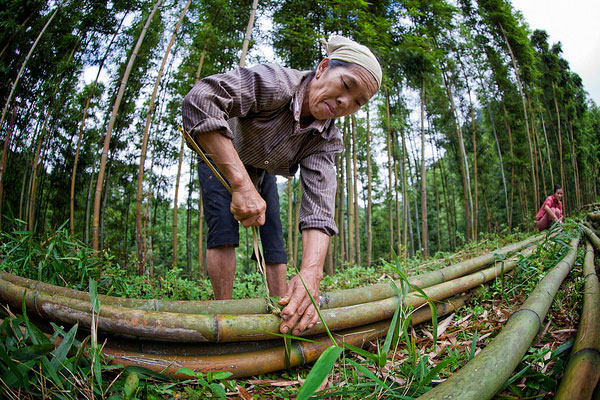
Gauging the impact of tropical forest logging: Winrock develops new method for quantifying carbon emissions
ARLINGTON, Va. (April 2, 2014) — Researchers at Winrock International have developed a first-of-its-kind method for estimating carbon emissions from forest degradation caused by selective logging in tropical regions. Refined over a period of 15 years and tested in six countries, the approach is highlighted in an article authored by Winrock’s Ecosystems Services experts, Timothy Pearson, Sandra Brown and Felipe Casarim — published April 1 in Environmental Research Letters.
Until now, efforts for reducing emissions from deforestation and forest degradation (REDD+) in developing countries have focused on deforestation, which has proven, robust methods for estimating associated carbon emissions. In contrast, there are no well-established methods for estimating carbon emissions associated with forest degradation. The new method developed by the Winrock team measures logging-associated emissions from all sources: the extracted timber, the incidental damage to the surrounding forest, and the logging infrastructure such as roads, skid trails and log decks. The estimate of the total emissions hinges on the simple, readily available statistic of extracted volume.
Winrock first began exploring ways of measuring carbon emissions from logging in 1998 as part of an early forest-based greenhouse gas mitigation project in Bolivia. Over the years, with support mainly from the U.S. Agency for International Development (USAID), Winrock staff refined and tested the approach for use across the tropics. After applying the method to logging activities in nine countries, they found that the average emissions from logging were about 12 percent of those from deforestation, although the actual range was wide, varying from 6 to 68 percent.
Study results indicate that the relative impact of carbon emissions from logging varies from country to country, depending on the amount of ongoing deforestation and the tropical timber harvesting practices used. Countries with relatively low deforestation emissions such as Guyana, Suriname and the Republic of Congo had higher relative emissions from logging, typically 50 percent or more of those from deforestation. In contrast, countries with high deforestation emissions, such as Brazil and Indonesia, had relatively low emissions from logging, typically less than 10 percent of those from deforestation
According to Dr. Tim Pearson, the study’s primary author, the findings have far-reaching implications related to policy and opportunities for reducing emissions. “Increased understanding of the various emission sources from logging can help significantly reduce logging-related emissions through improved practices such as recovering more timber per felled tree, improving directional felling to reduce damage to surrounding forest and planning infrastructure to minimize surface disturbance. However, our work shows low per-unit-area emissions from logging that demonstrates how forest management can be an alternative to deforestation in areas under pressure because of increases in forest value while maintaining forest cover and carbon stocks.”
“This method belies the notion that all REDD+ accounting must be based on remote sensing,” adds co-author Dr. Sandra Brown. “This cost-effective, accurate and relatively easy-to-use method can be used for REDD+ implementation and national inventories worldwide. We’ve already trained forestry staff in Guyana in this method and they are using it to estimate logging emissions at the national scale.”
Winrock International is a nonprofit organization that works with people in the United States and around the world to empower the disadvantaged, increase economic opportunity, and sustain natural resources. Winrock is headquartered in Little Rock, Ark., and has an office in Arlington, Va., with project offices worldwide.
